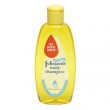
Excellent survey run by Ross Kehl over at Window Film Magazine asking the question of what type of solution is used by window tinters. The responses to the survey were enough to draw a real conclusion. The results were not surprisingly, Baby Shampoo being #1 as the go to solution for professional tinters.
What soap/solution do you use for film installation?
Baby Shampoo
46.4%
Joy Dish Detergent
17.9%
Ajax Dish Detergent
3.6%
Other (enter response in comment box below)
32.1%
Showing his in-depth knowledge, Ross goes further and explains



